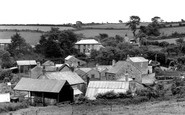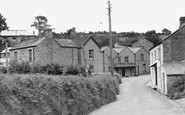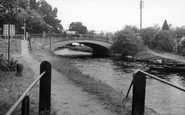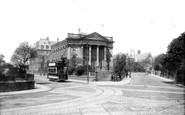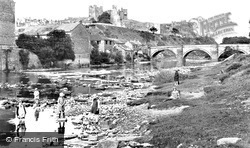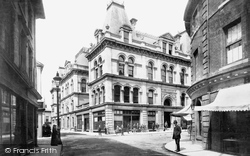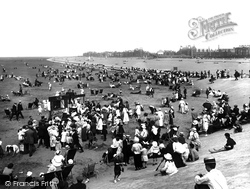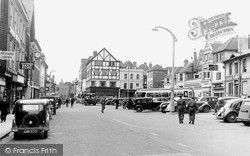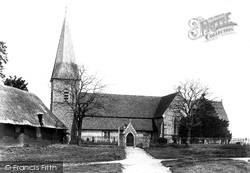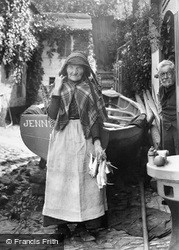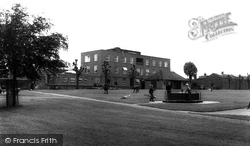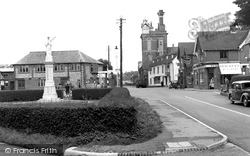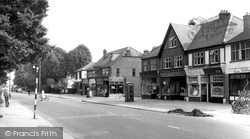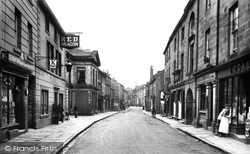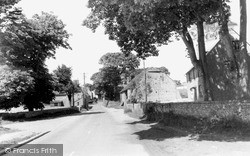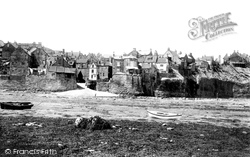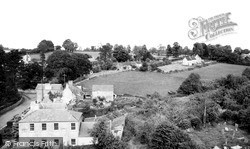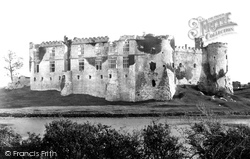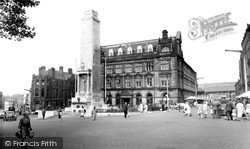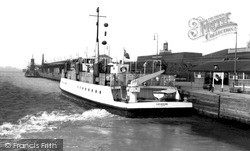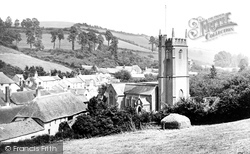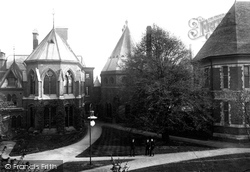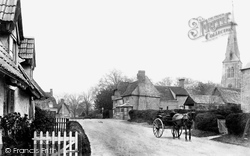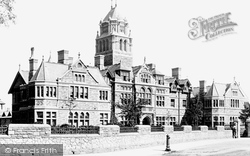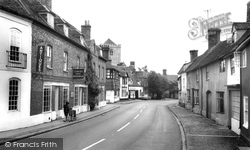Merry Christmas & Happy New Year!
Christmas Deliveries: If you placed an order on or before midday on Friday 19th December for Christmas delivery it was despatched before the Royal Mail or Parcel Force deadline and therefore should be received in time for Christmas. Orders placed after midday on Friday 19th December will be delivered in the New Year.
Please Note: Our offices and factory are now closed until Monday 5th January when we will be pleased to deal with any queries that have arisen during the holiday period.
During the holiday our Gift Cards may still be ordered for any last minute orders and will be sent automatically by email direct to your recipient - see here: Gift Cards
Places
3 places found.
Those places high-lighted have photos. All locations may have maps, books and memories.
Photos
68 photos found. Showing results 1,741 to 68.
Maps
12 maps found.
Books
15 books found. Showing results 2,089 to 15.
Memories
7,564 memories found. Showing results 871 to 880.
Rose View
1970 - 1984: As you look at this photo the last building on the right, the barn like cottage with the small window, is Rose View. My mum and dad bought it for £1,000 in 1970, and set to work modernising it as I was due 1971 and my brother ...Read more
A memory of Polgooth in 1970 by
Great Part Of The Village
1970's and 80's: We had a great childhood playing at this end of the village. It was quiet except for the cars of people that lived up here. Everyone knew each other. My old house is in the background, all you can see is ...Read more
A memory of Polgooth in 1980 by
The Towpath Where The Boats Were Moored Later On
There used to be a very large weeping willow there that used hang over the river. We used to cast underneath it as fish used to congregate under it. This is the bank where I did most of my fishing ...Read more
A memory of Harlow in 1949 by
Saving The Shipwrecked Sailors
Robert and Donald Mapleston and were excellent swimmers. (Their sister, my Great Grandmother, Anne Mapleston Jackson, passed away in 1944.) They lit bonfires to warn the ships, but when a ship wrecked they used a ...Read more
A memory of Land's End in 1870 by
My Short Life In Gillingham Kent
I was born in a naval nursing home called "Canada House" on the 18th November 1954. I was the first child and boy - I was spoilt. I went to school at Byron Road Infants school until I was 6 then we moved to ...Read more
A memory of Gillingham in 1960 by
Penton Camp Club
The Penton Camp Club started in about 1903. Its members included the Manager of Martin's Bank, London, the manager of the Drury Lane Theatre and many other rich men. They would come by train to Staines, the old station at the ...Read more
A memory of Penton Hook in 1900 by
Chisholm Cottage
My great-great-great grandparents lived opposite Wesley Chapel in the late 1800s, behind the trees on the right-hand-side of the 1901 Wesley Chapel photo. During the 1830s, Richard JACK (b1813) and some of his brothers moved to ...Read more
A memory of Hartlepool in 1880 by
Happy Childhood Holidays
I say 1950 for the year my memory relates to but in fact my memories cover from around 1946 to 196 I've only just found this web site for "Memories" although have looked at the site before and what nostalgia it has ...Read more
A memory of Llwyngwril in 1950 by
Flood
I was sent off to buy some bread by my mother. But crossing the river Crouch by the bridge was impossible. Wickford was under water. I don't recall the year. But the brand name of the bread was: Wheatchief. I used to buy sandpaper in Mays ...Read more
A memory of Wickford by
Saturdays
I went to Ferndale nearly every Saturday with my Mum and brother to visit my grandparents and my Great Aunt and Uncle. My grandparents, the Gambles, lived in Brynhyfryd and we would get off the bus at the bottom of the hill on the Strand ...Read more
A memory of Ferndale by
Captions
2,501 captions found. Showing results 2,089 to 2,112.
The Norman castle was begun by Alan Rufus in 1071 and dominates the entrance to Swaledale.
Built in 1882, the Corn Exchange continued in use as such right up until 1972.
On the right of the group, three young ducklings are hitching a ride on their mothers' backs. Reed beds can be clearly seen at the far edge of the broad, with trees on land behind.
Mums and children gather round to watch the antics of Punch and Judy, or buy an ice cream from Robinson and Eastwood's stall.
This view is looking back towards the High Street.The Southern Daily Echo (now the Southern Evening Echo) still exists, but not its Salisbury office.The famous clock above Electric House is still there.The
This fine Early English church, set back from the village and behind a narrow green, boasts a raised 13th-century chancel and a tapering, shingled broach spire.
Mums and children gather round to watch the antics of Punch and Judy, or buy an ice cream from Robinson and Eastwood's stall.
The fisher women of Newlyn clustered at the fish-stalls with their 'cowels', baskets carried on their backs, which were supported by a band passed round their foreheads.
The Recreation Ground, known as 'the Rec', was purchased by public subscription started in 1887, the year of Queen Victoria's Golden Jubilee.
Horndean began as a result of the 18th-century turnpike road.
By the 1930s the tiny hamlet of Hare Street had been swallowed up into Gidea Park.
This is the scene looking back down Kirkby's Main Street towards the Royal Hotel, which can just be seen in the distance.
Back into Willingdon, continue north to turn towards Jevington, through Wannock, and onto the scenic Jevington Road.
With a little imagination, it is almost possible to smell the uncovered weed drying in the sun, as a lonely figure tramps with bowed back along the lower part of the slipway towards the boat trolley,
Here we see Nunney at the north-east end. The house in the foreground, built in 1820, was the church school house until 1896, when it became known as the Church Rooms.
The west range of the castle to the right dates back to the 13th century, whereas the heavily fenestrated north range to the left is Elizabethan, the work of Sir John Perrot, half-brother
The Main General Post Office is on the left of the photograph. Gone are the days when it opened seven days a week from 7.30am to late in the evening.
A little further east along the Essex shore our photographer reaches Tilbury and continues his maritime theme; he firmly turned his back on the remarkable 1670s Tilbury Fort, built by a Dutch engineer
Combeinteignhead takes its name from the valley which runs down to the Teign estuary at Combe Cellars.
The Oxford Union consists of various buildings in the style of the Gothic Revival which date back to the Victorian and Edwardian eras.
This view looks back towards the town centre with London Road to the left by the Marquis of Granby and the tram leaving London Road.
Ellington's church is mentioned in the Domesday Survey of 1086, but the oldest surviving part of the building dates back to the 13th century.
Opened in 1883 the Edward Seward-designed South Wales and Monmouthshire Infirmary was built at a cost of £23,000.
The abbey church of St Peter and St Paul is all that remains of an Augustinian abbey built on the site in 1170. The High Street has many interesting houses, some dating back to the 16th century.
Places (3)
Photos (68)
Memories (7564)
Books (15)
Maps (12)

